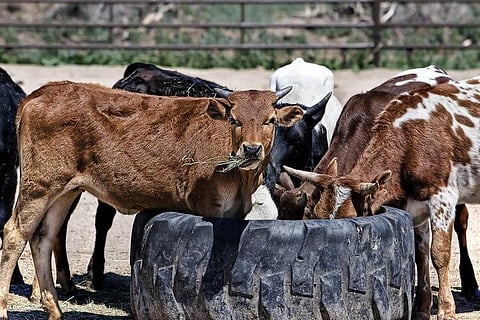

When the jallikattu protests rocked Tamil Nadu earlier this year, the debate surrounding the controversial sport was pitched as tradition vs animal cruelty. However, the conversations around it also led to discussions on the dairy industry and health issues.
The milk given by indigenous cattle breeds is healthier than what's produced by foreign breeds was a claim that was widely circulated on social media. But what really is A1 or A2 milk?
What’s the difference between A1 and A2 milk?
Dairy is one of the key sources of nutrition for children, and even adults, especially in a dairy-fed country like India. Casein is the main protein in milk and makes up about 80 percent of the total protein.
A2 cows, that is, the native breeds of cows, produce this protein in their milk, along with an amino acid called Proline.
Newer hybrid breeds, like the Jersey cow are A1 cows (including breeds like Holstein, Friesian and Ayrshire). In these breeds, the Proline amino acid gets converted to Histidine as a result of gene mutation over the years.
Now, here’s the main concern — in A2 cows, Proline bonds with another protein called BCM7 and prevents the latter from leaching into the milk. However A1 cows have Histidine, which doesn’t prevent the BCM7 from passing into our own GI tracts.
What’s wrong with BCM7?
BCM7 has been shown to lead to delayed psycho-motor (brain-to-muscle) development. Further evidence suggests that people who drink A1 milk are at risk for type-1 diabetes, coronary heart disease and mental disorders, such as autism and schizophrenia.
What to consider?
The native desi breeds produce A2 milk. However, these breeds have been replaced by a high-yielding cross breed, popularly known as HF or Holstein Friesian in India, which provides roughly double the amount of A1 milk, experts say.
According to Mr. Maruti Gargote, R&D specialist at Sarda Milk Farms, “The desi cow gives, say 10 litres of milk a day. But the hybrid breeds produce 20-22 litres a day. And this difference is what is being monetized. To meet the demand for more and more milk, we have neglected our native breeds whose milk was always considered to be superior even with health benefits. The pity is that we are waking to this reality after the West is getting enlightened, much like many other things.”
He points out the instance of Pathmeda in Rajasthan, which boasts of over 1 lakh native cows. Here, milk is exported as milk and even powder to meet demands for A2 milk abroad.
What goes down in dairy farms?
Dipali Gupta, manager of Amrut Dairy, says that the key to the success of any dairy farm is the upkeep of its animals.
“In the olden days, people were so used to the milkman coming in with freshly milked milk from a cow he raised in his backyard. This culture of having dairy farms within city limits is now almost extinct. The urbanisation has led to urban dairy houses with toned and packaged milk which has definitely compromised quality. What’s worse is that this milk is rated and sold as per fat content. This has led to adulteration and quality compromise, mainly because the water quality has also gone down.”
She adds that unless special dairy farms are maintained, the cows are fed random products, including stale food and spoiled rice, to keep them alive.
“How can you expect good quality milk from such poorly fed cows?” she asks.
What about quality control?
It is a known fact that the largest milk “producers” don’t have their own dairies. They procure milk from smaller farms or farmers. FSSAI guidelines dictate that the milk needs only be reviewed for fat and solids not fat (SNF) and nothing else. Disturbingly, there is not enough infrastructure to differentiate A1 or A2 milk or test for pathogens.
The bottomline?
A2 milk does contain more Omega-3 fatty acids which are good for your health. However, it's difficult to say if the milk you are consuming is really safe and healthy unless you are sure about its source. While there's no need to hit the panic button, becoming more aware about a food we consume routinely can set us on the path to finding better solutions.